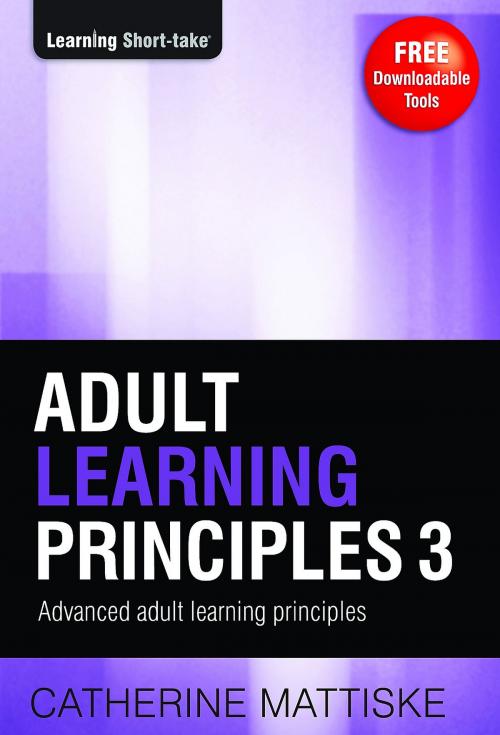Adult Learning Principles 3: Advanced Adult Learning Principles
Nonfiction, Reference & Language, Education & Teaching, Educational Theory, Adult & Continuing Education| Author: | Catherine Mattiske | ISBN: | 9781921547577 |
| Publisher: | AudioInk | Publication: | July 10, 2012 |
| Imprint: | AudioInk | Language: | English |
| Author: | Catherine Mattiske |
| ISBN: | 9781921547577 |
| Publisher: | AudioInk |
| Publication: | July 10, 2012 |
| Imprint: | AudioInk |
| Language: | English |
The principles of adult learning underpin all corporate training programs including face-to-face and e-learning. Participants are encouraged to learn and are assisted in their learning by training programs that cater for different learning styles. All adults have a unique combination of preferences that make up their personal learning style. To be trained in contrast to a preferred learning style can result in training that is difficult to understand, poorly paced, and difficult to retain and apply. With increasing pressure on training departments to reduce the duration and increase the effectiveness of training, instructional designers and trainers must have a solid knowledge of the theories and principles of adult learning and how this can be applied to ensure balanced training for all learning styles.This Learning Short-take™ combines self-study with workplace activities to build knowledge of adult learning principles. You will learn three advanced principles of adult learning: Multiple Intelligences, Whole Brain Learning and Metacognitive Reflection. The Learning Short-take™ is designed primarily for trainers who work in face-to-face training, however is also as appropriate for those developing other types of training interventions (e.g. e-learning, self-study).Learning Objectives Explain the value of using a balanced adult learning approach. List the characteristics of left brain dominance vs. right brain dominance. Use the Brain Dominance theory to analyze and make improvements to an existing training program. List the Multiple Intelligences. Analyze an existing training program and suggest improvements to maximize the Multiple Intelligence Balance. Define metacognitive reflection and be able to implement learning and review activities using this training method. Create a Skills Development Action Plan.
The principles of adult learning underpin all corporate training programs including face-to-face and e-learning. Participants are encouraged to learn and are assisted in their learning by training programs that cater for different learning styles. All adults have a unique combination of preferences that make up their personal learning style. To be trained in contrast to a preferred learning style can result in training that is difficult to understand, poorly paced, and difficult to retain and apply. With increasing pressure on training departments to reduce the duration and increase the effectiveness of training, instructional designers and trainers must have a solid knowledge of the theories and principles of adult learning and how this can be applied to ensure balanced training for all learning styles.This Learning Short-take™ combines self-study with workplace activities to build knowledge of adult learning principles. You will learn three advanced principles of adult learning: Multiple Intelligences, Whole Brain Learning and Metacognitive Reflection. The Learning Short-take™ is designed primarily for trainers who work in face-to-face training, however is also as appropriate for those developing other types of training interventions (e.g. e-learning, self-study).Learning Objectives Explain the value of using a balanced adult learning approach. List the characteristics of left brain dominance vs. right brain dominance. Use the Brain Dominance theory to analyze and make improvements to an existing training program. List the Multiple Intelligences. Analyze an existing training program and suggest improvements to maximize the Multiple Intelligence Balance. Define metacognitive reflection and be able to implement learning and review activities using this training method. Create a Skills Development Action Plan.















